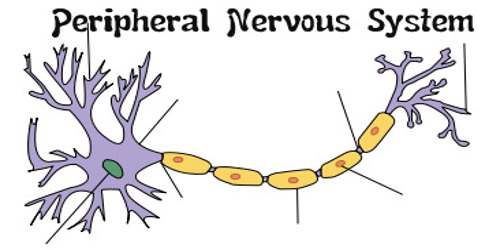Picture Of Nervus System | The nervous system can be divided into several connected systems that function together. The autonomic nervous system has two divisions: The picture on the left shows the somatic motor system. The central and peripheral nervous systems. Buy premium plan get 2 free gifts. We continue our tour of the nervous system with a look at synapses and the crazy stuff cocaine does to your body. However, the primitive nervous systems of these organisms do not preclude prolonged and coordinated responses and integrated behaviour to the simplest stimuli. Occupying much of the head in humans and protected by the skull in all vertebrates, it is. These systems have specific functions, and can be affected by a below is a very involved picture of the anatomy of the spine. The central nervous system is made up of the brain and spinal cord. Buy premium plan get 2 free gifts. Peripheral nervous system (pns)—all neural tissue outside the central nervous system. Occupying much of the head in humans and protected by the skull in all vertebrates, it is. Following fertilisation, the central nervous system begins to form in the 3rd week of development. Spinal nerves—one of 31 pairs of nerves that originate on the spinal cord from anterior and posterior roots. Automatic motor reflex, nervous system, visceral nervous system, involuntary nervous system, peripheral nervous system control system below the level of consciousness to control visceral functions. All parts of the nervous system influence each other. Here are some key points about the central nervous system. Functionally, the nervous system has two main subdivisions: Learn about pictures nervous system with free interactive flashcards. The nervous system can be divided into anatomic and functional parts; Nervous system with lymph nodes. The neurons conduct impulses and the neuroglia support and protect the neurons. The nervous system can be divided into anatomic and functional parts; The nervous system is made up of the central nervous system and the peripheral nervous system it consists of the cerebrum — the area with all the folds and grooves typically seen in pictures of the brain — as well as some other structures under it. Learn more about how the pns works. The nervous system is a complex network of neurons and cells that carry messages to and from the brain and spinal cord to various parts of the body. The nervous system detects environmental changes that impact the body. The somatic, or voluntary, component; All nervous system structures are classified as part of the cns (brain and spinal cord) or pns (nerves and ganglia). ← integumentary system — human physiology — senses →. Homeostasis — cells — integumentary — nervous — senses — muscular — blood — cardiovascular — immune — urinary — respiratory — gastrointestinal — nutrition — endocrine — reproduction (male) — reproduction (female). Buy premium plan get 2 free gifts. Following fertilisation, the central nervous system begins to form in the 3rd week of development. The neurons conduct impulses and the neuroglia support and protect the neurons. Central nervous system (cns) functions, parts, and locations. In diffuse systems nerve cells are distributed throughout the organism, usually beneath the outer epidermal layer. The nervous system is broken down into two main parts: Peripheral nervous system (pns)—all neural tissue outside the central nervous system. Cranial nerves—peripheral nerves originating at the brain. The conductive nerve fibers run without limitations from the cns to the pns and vice versa. If you have a back injury, the picture below will help you understand exactly where your. Following fertilisation, the central nervous system begins to form in the 3rd week of development. The nervous system consists of the central and the peripheral nervous system. The peripheral nervous system (pns) includes all the nerves that lie outside of the central nervous system. And the autonomic, or involuntary, component. The cns consists of the brain and spinal. In diffuse systems nerve cells are distributed throughout the organism, usually beneath the outer epidermal layer. In this article, we will outline the stages involved in the development of the central nervous. Cranial nerves—peripheral nerves originating at the brain. The nervous system is broken down into two main parts: Motor nerves of the pns are classified on the basis of whether they stimulate skeletal muscle (somatic division) or smooth/cardiac muscle and glands. More detail and supporting information is in the main article. The part of the nervous system that controls voluntary movemen… regulates key involuntary functions of the body. Following fertilisation, the central nervous system begins to form in the 3rd week of development. The central nervous system is also divided into two major structures. The picture you have in your mind of the nervous system probably includes the brain, the nervous tissue contained within the cranium, and the spinal cord, the extension of nervous tissue within the vertebral column. In biology, the nervous system is a highly complex part of an animal that coordinates its actions and sensory information by transmitting signals to and from different parts of its body. The spinal cord is the link between the brain and the nerves in the rest of your body.

Picture Of Nervus System! However, the primitive nervous systems of these organisms do not preclude prolonged and coordinated responses and integrated behaviour to the simplest stimuli.
Referencia: Picture Of Nervus System
0 comments:
Post a Comment